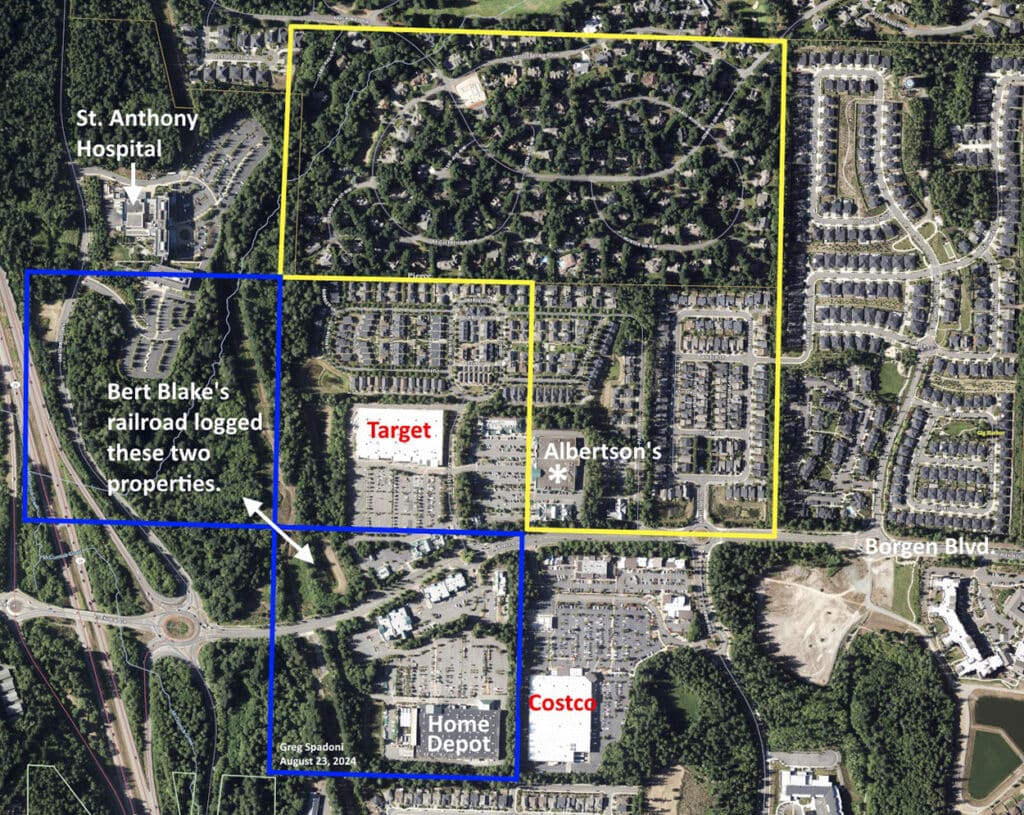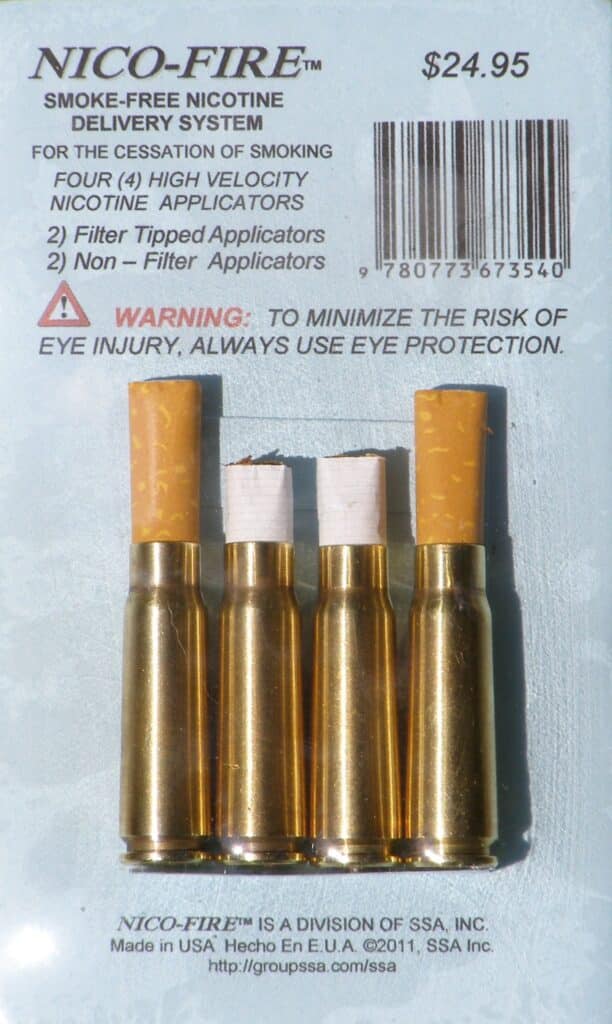Arts & Entertainment Community
Gig Harbor Now and Then | This week’s question involves a disgusting habit
In spite of being a leading authority on absolutely nothing, people ask me questions anyway. For many years, by far and away the most frequent one has been: “What is WRONG with you?!”
Arts & Entertainment Sponsor
Arts & Entertainment stories are made possible in part by the Gig Harbor Film Festival, a proud sponsor of Gig Harbor Now.
Coming in a distant second is: “Are you going to finish that?”
But this is not the proper forum for those kinds of queries. This is for the type asked on the Gig Harbor Now Facebook page, and there were a few last week. Not being a member of Facebook, I’m unable to respond there, so I will here.
Josh Jacobsen asked:
“Where are you finding deed data that goes back so far?”
I very rarely start in the present and work backwards. I most often start with the original owners and work forward. Finding the first owners is usually the easy part. Those come from the hand-written ledgers of the local branches of the General Land Office. From there it’s a matter of tracing the ownership, deed by deed, through Pierce County real estate records. Some of that can be done online, but the majority can be done only at the Pierce County Annex in Tacoma. It’s very time-consuming, very tedious, and doesn’t always work out. Dead ends are not unusual. Neither is spending several hours to end up at one.
Edward Sarber wondered:
“Would it be possible to add a line drawing to a modern image map that shows the entire Railroad’s route and sites? Similar to what you did with the property lines, but with the tracks and important areas like the dump site.”
For the railroad’s entire route, no. There’s simply no way to know exactly where the tracks were laid across any large piece of land. Only bits of railroad grades remain, and no trestles. As the July 28, 2024, column noted, it’s even difficult to figure out the exact locations of rail crossings of county roads.
I have long ago outlined all the properties logged by the Gig Harbor Timber Co. on an aerial map. That’s part of the more than 300 pages I’ve written on the company. For other local railroads, it’s less certain that all the logged properties have been identified, but for three of them, most have.
Several years ago, for the Key Peninsula Historical Society, I made up such a map of all the parcels I could identify as having been logged by the Rainier Logging Co. of Minter. They printed it poster-sized and used it as part of their main exhibit that year. It can still be seen at their museum in Vaughn, though you might have to ask for it.
I can’t say with any certainty if some parts of the Gig Harbor Timber Co. railroad route on the maps Ed posted to Facebook are accurate without overlaying them with the logged property boundaries and rights-of-way, which I do not have the time to do at present. But I can say which parts are obviously not accurate. Beginning in the south, the log dump pier, as indicated with yellow, is not the one used by the railroad. That one came many years later, and was for trucks, not trains. The route through Crescent Creek Park was not as drawn.
Ed, it looks like you located it pretty well in Section 32, but mostly wrong in the southwest quarter of Section 29. You’ve got the crossing of Peacock Hill in the right spot (how’d you do that?!), but I don’t yet know if the railroad reached its westernmost 120 acres by crossing the northwest quarter of the southeast quarter of Section 30, or through the southwest quarter of the southeast quarter of Section 30. I might be able to figure that out when time permits, as I know who granted them the right-of-way.
A merciful end
Now that nearly all the readers who managed to slog through those tedious explanations are hopelessly confused by the section, quarter, and quarter-of-quarter talk, we’ll move on to our regularly scheduled column. With any luck, maybe they’ll be able to uncross their eyes and refocus. If not, they’ll miss a terrific upcoming photo that practically defines the word “cool,” and we certainly wouldn’t want that to happen.
Regular business
First, this bit of old regular business: The Davenport Coffee Shop in Gig Harbor does indeed have a davenport for patrons to relax on while gnawing on a gigantic Davenport Pretzel, or anything else they serve. Slyly stepping into the shop between the breakfast and lunch rushes, the place was still so crowded that I couldn’t get a picture of more than a small corner of the daveno, so passed on the limited opportunity.
Our previous questions of local history concerned one of the Peninsula’s logging railroads. Not the Gig Harbor Timber Company, which we talked about in two previous columns, but another one. The questions are:
Who logged the old growth from the Gig Harbor Home Depot site?
Answer: Presented as a multiple choice question, there are two correct answers, numbers 8, Bert Blake, and 26, One of the above.
Bert Blake was a real estate speculator from Tacoma. His logging camp was based in North Rosedale. From there, his logging reached as far east as the middle of today’s Canterwood neighborhood on Peacock Hill.
Where were the logs dumped?
Answer: into Henderson Bay, between North Rosedale and Purdy.
How did the railroad that logged the Home Depot site differ from the one that logged the Albertsons store location?
(We noted that there were two fundamental differences.)
On Facebook, Sharon Smith ventured “One with a steam engine the other with a velocipede.”
The steam engine part is right. Both railroads used them, but different types, and in different ways.
Answer: Bert Blake’s logging railroad used peeled poles for rails instead of steel, and didn’t use a locomotive. The rail cars, one at a time, were pulled by cables from the drums of multiple steam donkeys stationed at various points along the route.
After finishing up in North Rosedale, Blake gave up logging and moved to California.

Bert Blake, a real estate speculator from Tacoma, logged the land where the Gig Harbor Home Depot store is today. Pierce County Assessor-Treasurer aerial base map.
From timber to tobacco
This week’s question is interesting in a very unfortunate kind of way.
There was a time, not that long ago, when smoking cigarettes was not only commonplace, but also fashionable. With the unprecedented reach of 20th century advertising, particularly television, tobacco companies made a variety of cigarette brands synonymous with glamour, adventure, or machismo (when’s the last time you saw that word in print?).
Smoking was allowed almost everywhere in public through most of the century. Stores, parks, restaurants, trains, buses, airplanes, stadiums, and even doctors’ waiting rooms allowed smokers to stink the places up. Second-hand smoke was viewed more as an unavoidable social annoyance rather than a blatant, ignorant inconsideration.
With cigarettes having been so widely accepted in society, it’s easy to assume that the dangers of smoking were largely unknown until the U.S. Surgeon General Luther Terry’s 1964 announcement that smoking causes lung cancer and probably heart disease. But that was only the official word. The idea that smoking was bad for your health was common knowledge long before that.
This week we take a look at smoking in the mid-20th century. Not in any kind of detail, but in a broad sense with a very small sample size.
A non-scientific case study
It’s not often we can look back in history and see how specific people used information known from childhood to guide certain aspects of their lives as adults. One rare example comes from May of 1921, when the Pierce County Women’s Christian Temperance Union sponsored an essay contest. The subject was tobacco, and the title was “Why Is Cigaret Smoking Harmful?” (“Cigaret” was an accepted spelling in 1921.)
Students at 48 grade schools throughout Tacoma and unincorporated Pierce County participated in the contest, including some from the Peninsula. In total 5,703 essays were submitted for consideration.
Of the Peninsula entries, Victor Heiman, 10 years old, of Lakebay, won $2.50 for having one of the four best essays in the county.
Though they did not place in the county competition, the four best essays from Wauna School were written by Belle Blakeslee, 15, Walter Luters, 16, Mildred Lofgren, 9, and Edward Lofgren, 12.
It’s interesting to see what the five Key Peninsula grade schoolers learned from their essays on the evils of smoking.
Without being able to prove cause and effect, we will state this week’s question as follows:
How many of the five Peninsula students named here paid heed to the dangers of cigarettes they wrote about in their essays and did not die from smoking-related diseases?
We’ll have the answer on Sept. 23.
You may have noticed that Walter Luters, at 16, was a little older than normal for a grade school student. He was most likely in the 8th grade. It was not unheard of for kids to miss entire years of school through illness, or school closures due to lack of funds. That sometimes resulted in older-than-normal kids finishing up the eighth grade, which was as far as the majority of students made it through before the post-WW2 period began.
Truth or consequences
I needed to take a picture of a cigarette to illustrate this week’s column, because if I don’t come up with at least a couple illustrations each time, I have to clean the office microwave oven. That brings up two questions:
- Do you know how much a pack of cigarettes cost?!
- Do you know how dirty the Gig Harbor Now office microwave oven gets?!
Answers: 1. eleven %#@*&! dollars and five cents, and 2. imagine exploding guacamole. Several times in a row. (Don’t think for a minute that I’m going to replicate that in my own microwave just to take picture for this column.)

In all fairness, a cigarette does make this guy look pretty cool. Photo by Greg Spadoni.
Buying cigarettes today is an adventure in itself. I went into a supermarket, grabbed a cart for grocery shopping, and sought out an employee to ask if they sold cigarettes. I was directed to a woman who unlocked the tobacco cabinet and took out a single pack of Marlboro filters. I was not allowed to put the pack in the shopping cart. I was either to pay for them on the spot or come back later, after I shopped for other things. I chose the latter.
When the time came to check out, I had to find the same employee, get the cigarettes from her, and go directly to a checkout stand. Even then they wouldn’t sell them to me without checking my driver’s license to make sure I was 21. Ridiculous. Anyone can tell I’m at least 25.
Making the world a better place
Ever on the lookout for ways to make the world a better place to live, I occasionally invent consumer products to improve the lives of my fellow citizens. Having witnessed many friends and acquaintances struggle to kick the smoking habit, in 2011 I invented an alternative nicotine delivery device that spares the lungs from having to inhale cancer-causing smoke.
Combining two favorite pastimes of young men, smoking and shooting guns, I came up with the revolutionary NICO-FIRE nicotine delivery system.

The NICO-FIRE Smoke-Free Nicotine Delivery System uses authentic AK-47 cartridges to rush a calming dose of nicotine into the body to control a jittery addiction. Photo by Greg Spadoni.
A new product, even a revolutionary one, is only as good as its advertising. The following is the original ad copy for NICO-FIRE:
What could be more important to good health than quitting smoking? What could be more difficult than quitting smoking? What could be more annoying than to begin a sales pitch with three stupid questions?
I know how hard it is to quit smoking because half of my smoker friends and co-workers have tried to quit hundreds of times. The other half has never even bothered to try, but that’s only because they see the first half failing every time they give it a go.
Until now.
As I have done with monotonous regularity, I have once again developed a consumer product that will revolutionize an industry. This time it’s actually two industries — the traditional cigarette industry and the smokeless nicotine industry — because our new product uses conventional cigarettes to supply the cure for smoking!
What is it that makes quitting smoking so impossibly difficult? Nicotine. Smokers are hooked on nicotine and suffer the symptoms of withdrawal when they give up cigarettes. For many years there have been smokeless nicotine products on the market but they achieve only mixed results at best. Nicotine gum doesn’t deliver the drug fast enough and nicotine patches can’t give an extra shot when it’s needed most. To no one’s surprise, I have solved both problems. The NICO-FIRE™ Smoke-Free Nicotine Delivery System is the fastest cure for nicotine jitters available today, smokeless or otherwise.
The NICO-FIRE™ Smoke-Free Nicotine Delivery System four-pack is conveniently sized (3″x5″) to easily slip into a shirt pocket so you can take a NICO-FIRE™ high velocity applicator (regular or filter tipped) wherever you go!
When it comes to quitting smoking, the NICO-FIRE™ Smoke-Free Nicotine Delivery System, with its handy size, economical price, choice of tips and fastest nicotine delivery possible, leaves only one question unanswered: What are you waiting for?!
Next time
This week we gave the answers to the previous logging questions, and a bonus answer on how to stop smoking. On September 23 we’ll have the answer to this week’s history question, and instead of an extra answer, the bonus will be another hard-hitting Gig Harbor Now and Then editorial opinion.
—Greg Spadoni, September 9, 2024
Greg Spadoni of Olalla has had more access to local history than most life-long residents. During 25 years in road construction working for the Spadoni Brothers, his first cousins, twice removed, he traveled to every corner of the Gig Harbor and Key Peninsulas, taking note of many abandoned buildings, overgrown farms, and roads that no longer had a destination. Through his current association with the Harbor History Museum in Gig Harbor as the unofficial Chief (and only) Assistant to Linda McCowen, the Museum’s primary photo archive volunteer, he regularly studies the area’s largest collection of visual history. Combined with the print history available at the Museum and online, he has uncovered countless stories of long-forgotten local people and events.

